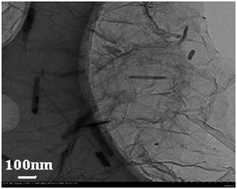Preparation of NiFe2O4nanorod–graphene composites via an ionic liquid assisted one-step hydrothermal approach and their microwave absorbing properties
Abstract
Novel NiFe2O4

* Corresponding authors
a
School of Chemical Engineering and the Environment, Beijing Institute of Technology, Beijing 100081, China
E-mail:
zhaoyun@bit.edu.cn
Novel NiFe2O4

 Please wait while we load your content...
Something went wrong. Try again?
Please wait while we load your content...
Something went wrong. Try again?
M. Fu, Q. Jiao and Y. Zhao, J. Mater. Chem. A, 2013, 1, 5577 DOI: 10.1039/C3TA10402H
To request permission to reproduce material from this article, please go to the Copyright Clearance Center request page.
If you are an author contributing to an RSC publication, you do not need to request permission provided correct acknowledgement is given.
If you are the author of this article, you do not need to request permission to reproduce figures and diagrams provided correct acknowledgement is given. If you want to reproduce the whole article in a third-party publication (excluding your thesis/dissertation for which permission is not required) please go to the Copyright Clearance Center request page.
Read more about how to correctly acknowledge RSC content.
 Fetching data from CrossRef.
Fetching data from CrossRef.
This may take some time to load.
Loading related content
